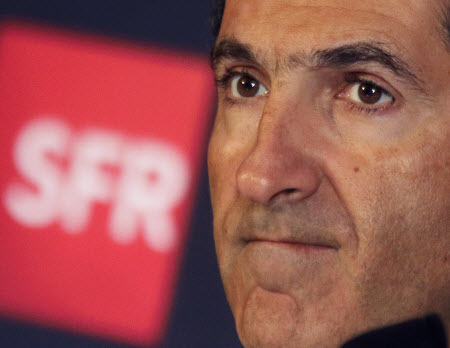A Cable Empire Grows — Fast

RELATED: Dolans to Drahi: Cash and Carry
With the stroke of his pen, the maverick European telecom mogul Patrick Drahi cemented Altice’s U.S. foothold as the fourth-largest cable operator with a $17.7 billion, all-cash deal to purchase Cablevision Systems, one of cable’s oldest family-owned companies.
The Cablevision deal comes on the heels of Altice’s pending $9.1 billion purchase of Suddenlink Communications, a midsized operator with 1.2 million customers in the Southwest and Midwest. With Cablevision, Drahi’s Altice gets 2.7 million cable customers in the country’s largest market — metropolitan New York City, specifically the Bronx, parts of Brooklyn, Long Island, and parts of New Jersey and Connecticut — and overnight becomes the largest foreign owner of a U.S. cable MSO, with 4 million subscribers.
But Altice’s speedy ascension up the cable ranks — it had no U.S. presence six months ago — brings with it vast uncertainties. And while chairman Patrick Drahi believes he can better run a U.S. cable business by applying European cost disciplines, some analysts believe he will face big challenges.
“Six months ago, we were nonexistent,” Drahi said at the Goldman Sachs Communacopia conference, adding that the new company still has more room to grow.
“This is moving fast, but we’re not in a hurry,” Drahi said. “There are more opportunities to consolidate at these same prices.”
Most analysts agree that Cablevision could be the tip of the iceberg for Altice.
Multichannel Newsletter
The smarter way to stay on top of the multichannel video marketplace. Sign up below.
“In our view, clearly Altice is not done with its acquisition strategy, and this could include any telco assets not nailed down,” wrote Pivotal Research CEO and senior media & communications analyst Jeff Wlodarczak.
Critics immediately centered on the deal’s high price — it works out to about 9.5 times cash flow, not including synergies, and 6.1 times with synergies — and what many have said are unrealistic cost-cutting goals. Typical deals are in the range of 7 to 8 times cash flow.
In a blog post, MoffettNathanson principal and senior analyst Craig Moffett said squeezing $900 million in cost synergies from Cablevision could be a chore, especially since Charter Communications has said it will derive about $800 million in cost synergies in its merger with Time Warner Cable, a company about five times larger than Cablevision.
“Cost reductions like those won’t just mean cutting SG&A,” Moffett wrote. “It will mean slashing customer service; repair and maintenance; and sales and marketing (specifically, channel-mix optimization and back-office upgrades). It’s hard not to imagine that that might have at least some impact on market share.”
Altice is one of the most rapidly growing telecom companies in Europe. Based in the Netherlands, it spent about $28 billion on deals in 2014 alone. Altice has about 3.1 million cable customers in France and Israel and more than 20 million wireless customers across Europe.
Altice has managed to squeeze profits out of its businesses with a “slash-and-burn approach,” drastically reducing head count, eliminating what it says are unnecessary costs and aggressively negotiating contracts with suppliers.
Drahi said he also sees savings in electricity costs, by eliminating amplifiers in the network, and in shifting more of the sales function online.
“My model is to bring U.S. ARPU to Europe and the European expense to the U.S.,” Drahi said.
The recipe is simple, Drahi added — control excess costs and the cash flow will take care of itself.
Altice also sees cost-cutting opportunities in employee salaries. CEO Dexter Goei said more than 300 Cablevision employees make $300,000 per year or more.
“I understand that,” Goei said at the conference. “There’s a new sheriff in town. We will probably run things a little differently.”
Still, cost containment wasn’t Cablevision’s only problem. The company has been bleeding subscribers in the past few years after a strong period of growth in the early 2000s. According to Moffett, video subscriber losses in two key areas — the New York boroughs of the Bronx and Brooklyn — have accelerated to 6% and 8% in the past quarter, indicating that Cablevision’s competitive position against Verizon Communications’s FiOS TV is worse than it has been letting on.
Verizon chairman and CEO Lowell McAdam told CNBC’s David Faber last week that he welcomes Altice as a competitor, adding that while Drahi talks tough, he’s heard it before.
“Success in Europe or Asia doesn’t necessarily mean success in the U.S.,” McAdam told CNBC. “Our product, fundamentally, is superior when you have fiber into the home versus any of the DOCSIS products. We welcome them into the market.”
Drahi’s strategy hasn’t quite been solidified yet, but he hinted that higher prices for broadband and more flexible video packaging could be a path. “I think broadband is too cheap,” he said.
In a research note, Moffett said that higher broadband prices may be the only way Altice can offset video losses.
“Verizon’s FiOS brand managers must be licking their chops,” Moffett wrote.
